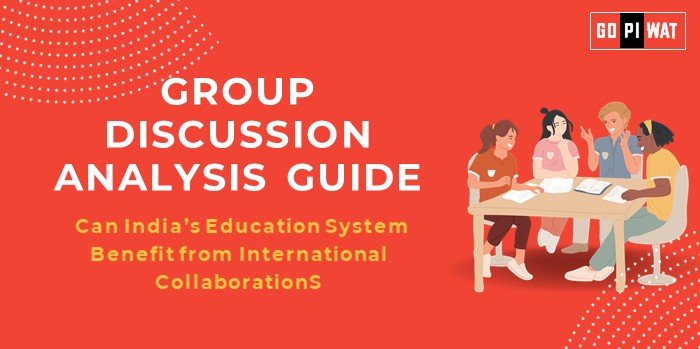📋 Written Ability Test (WAT)/Essay Analysis Guide
🌐 Written Ability Test (WAT)/Essay Analysis Guide
💡 Understanding the Topic’s Importance
International collaborations have the potential to modernize India’s education system by infusing global best practices, creating research opportunities, and bridging skill gaps. Partnerships with global institutions can help India align with global education standards, increase employability, and foster innovation.
⏳ Effective Planning and Writing
- 🕒 Time Allocation:
- 📝 Planning: 5 minutes
- ✍️ Writing: 20 minutes
- 🔍 Review: 5 minutes
- 📋 Preparation Tips:
- 📊 Collect data on NEP 2020, global success stories, and India-specific challenges.
- 🌍 Focus on examples of international models that India can emulate for greater educational impact.
💬 Introduction Techniques for Essays
- ⚖️ Contrast Approach: “While India sends over 1 million students abroad annually, its education system struggles to attract foreign institutions for meaningful collaborations.”
- 🔧 Solution-Based Introduction: “By fostering partnerships with global universities and organizations, India can address its pressing education gaps and enhance its competitiveness.”
📊 Structuring the Essay Body
🏆 Achievements:
- 🔬 Joint Research Initiatives: Collaborations between Indian and global universities have led to advancements in areas like technology and medicine.
- 🌍 Increased Employability: Students benefit from global exposure and skill development, enhancing their competitiveness in the international job market.
- 📜 Policy Support: NEP 2020 emphasizes partnerships with foreign universities to promote dual degrees and credit transfer mechanisms.
⚠️ Challenges:
- 💰 High Costs: International programs are often expensive, making them inaccessible to students from low-income families.
- 🏫 Limited Rural Access: Students from rural areas face challenges such as lack of information, infrastructure, and opportunities.
- 📜 Regulatory Bottlenecks: Issues like degree recognition and credit transfer delays hinder seamless collaborations.
🚀 Future Outlook:
- 🌍 Global Credit Systems: Adoption of standardized global credit systems to enable smooth transitions for students.
- 💰 Cost Reduction: Policies to reduce the financial burden on students through scholarships and funding opportunities.
- 🎓 Inclusivity: Ensuring rural students and underserved communities have access to international collaboration opportunities.
✅ Concluding Effectively
- ⚖️ Balanced Perspective: “While promising, global collaborations must be accompanied by equitable and inclusive frameworks to ensure every student benefits.”
- 🌍 Global Comparison: “India can emulate Germany’s model of free education and cross-border partnerships to make international collaboration more impactful and accessible.”
📊 Recommendations for Sustainable Progress
- 📜 Develop Robust Policies: Standardize credit transfer mechanisms and ensure degree recognition across borders.
- 💰 Increase Funding: Provide scholarships and financial support to make international programs affordable for all.
- 🏫 Promote Inclusivity: Launch initiatives to enable rural student participation through awareness programs and targeted outreach.
📝 Sample Short Essays
🔹 Balanced Perspective:
“International collaborations can redefine Indian education by infusing global best practices, enhancing research opportunities, and bridging skill gaps. However, equitable policies addressing cost barriers and rural inclusivity are essential for long-term success.”
🔹 Solution-Oriented:
“By fostering global partnerships and introducing targeted scholarships, India can address challenges like accessibility and skill gaps. International collaborations can transform India’s education landscape into a hub for global excellence.”
🔹 Global Comparison:
“India must emulate Germany’s free education model and cross-border partnerships to attract global talent and provide affordable international education to its students. This will position India as a leader in global academia.”


